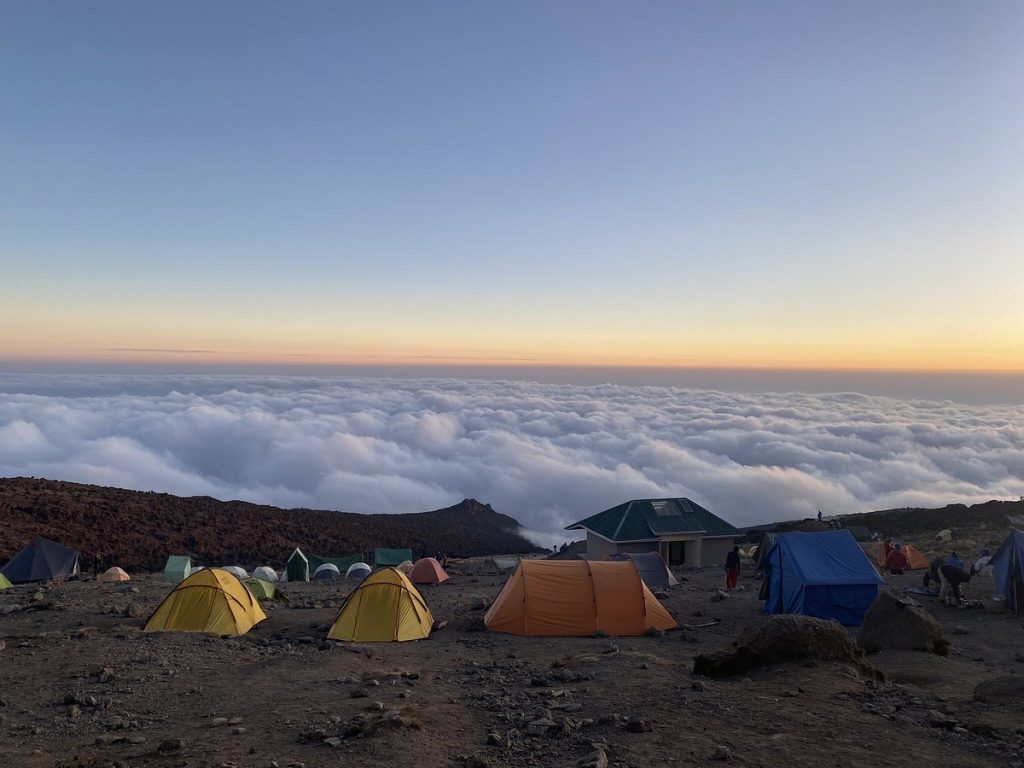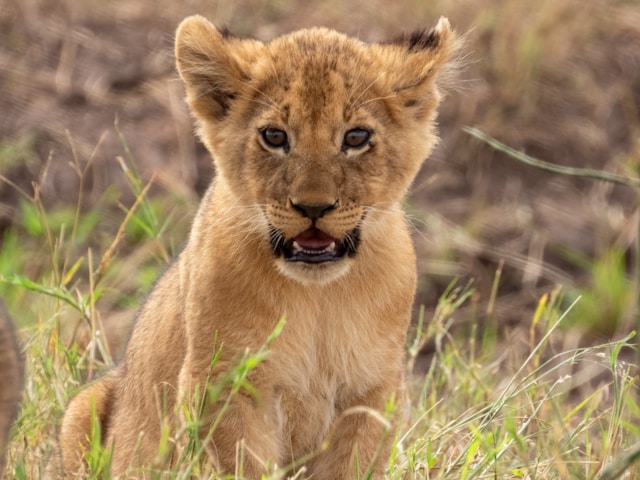Tanzania has exceptionally rich and varied ecosystem and is particularly notable for its elephant population, which is one of the largest on the continent with high concentration in Tarangire National park, and for it’s large cats, especially lions, which are routinely seen in Serengeti National Park and Ngorongoro Crater and tree climbing lions which can only be seen in Lake Manyara national park. The country is also known for the large herds of wildebeest and zebras found especially in its northern parks, and for its buffalo herds.
As a bird-watching destination, Tanzania holds many bird species compare with other destinations on the continent. In addition the country it is home to many water birds, and to large flocks of flamingo, especially around Lake Natron and Lake Eyasi where Hadzabe (also known as Hadzapi or Tindiga) people, who are believed to have lived here for nearly 10,000 years and continue to follow hunting-and-gathering traditions.
OUR TOP TOUR DESTINATION
Arusha National Park
Although it is one of Tanzania’s smallest parks, Arusha National Park is one of the most beautiful and spectacular. It is also one of the few that you are allowed to walk in (accompanied by a ranger). Yet few travellers appear to visit it, possibly because of their haste to press on to the more famous parks of Ngorongoro Crater, Serengeti and Mt. Kilimanjaro. This is a profound mistake since it has all the features of those three parks, including a superb range of flora and fauna.
The park’s main features are Ngurdoto Crater (often dubbed little Ngorongoro), the Momela Lakes and rugged Mt Meru (4556 metres), which overlooks the town of Arusha to the North. Because of the differing attitudes within the park (from 1500 metres to over 4500 metres) and the geological structure, there are several vegetation zones, which support appropriate animal species.
Tarangire National Park
Tarangire National park covers quite a large area south-east of Lake Manyara, mainly along the course of the Tarangire River and the swamplands and flood plains which feed it from the east. During the dry season, the only water here flows along the Tarangire River. The park fills with herds of zebra, wildebeest and kongoni, which stay until October when short rains allow them to move to new pastures. Throughout the year, however, you can see eland, lesser kudu, various species of gazelle, buffalo, giraffe, waterbuck, impala, elephant and the occasional leopard and rhino. For ornithologists, the best season is from October to May.
Tsetse flies can be a pest in this park at certain times of year (eg February and March), so keep the windows of your vehicle closed when not taking photographs.
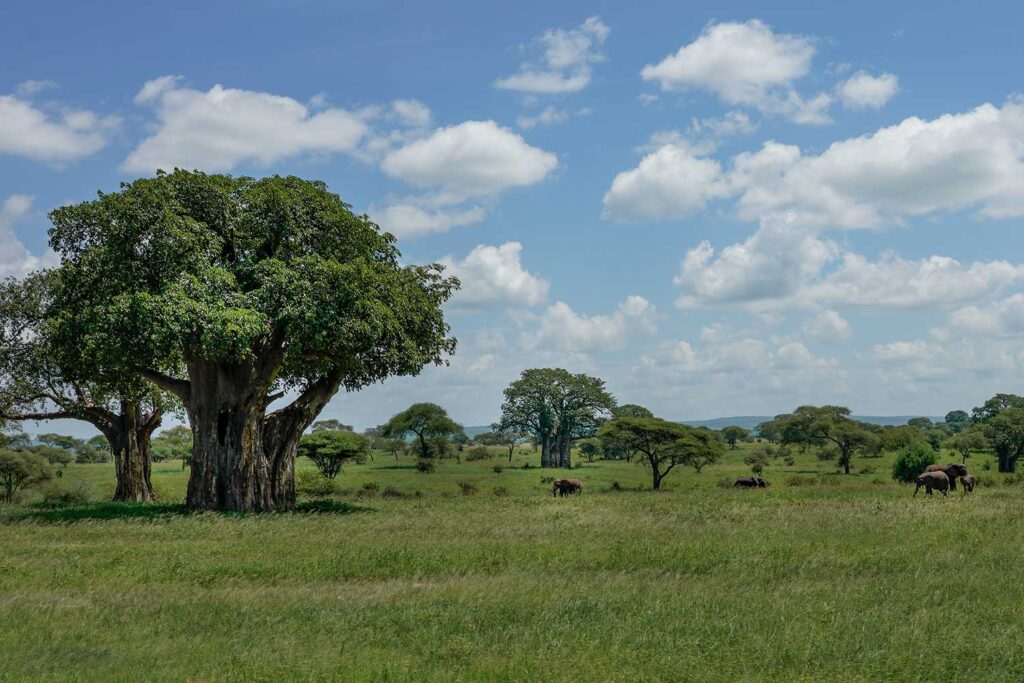
Olduvai Gorge
A perfect break to and from chasing animals in Serengeti. Located at the Rift Valley, Olduvai Gorge is a must visit for those who are interested in understanding the early origins of humankind. The site has a fantastic new museum with incredible panoramas representing the species that made the gorge their home. Very Interesting stories about the early discovery done by Dr. Leakey and his wife. If you are looking for the amazing Historical Site to learn about how the humankind grew from Australopithecus to a human being today, Olduvai is the place. Feature this place in your bucket list Now.
Serengeti National Park
Serengeti which covers 14, 763 sq km, is Tanzania’s most famous game park and is continuous with the Masai Mara Game Reserve in neighbouring Kenya. Here you can get a glimpse of what a lot of East Africa must have looked like.
On the seemingly endless and almost treeless plains of Serengeti are literally millions of hooded animals. They are constantly on the move in search of pasture and are watched and pursued by the predators which feed off them. It is one of the most incredible sights you will ever see and the numbers are simply mind-boggling.
Mikumi National Park
Mikumi National park covers 3237 sq km and sits astride the main Dar es Salaam to Mbeya highway, about 300 km from Dar es Salaam. Not many budget travellers seem to visit this park, probably because of the lack of enough information about the park compared to other parks like Serengeti and Ngorongoro, but there is a lot of wildlife to be seen. Elephants, lions, leopards, buffaloes, zebra, impala, wildebeest and warthogs can be viewed at any time of year.
One of the principal features of Mikumi is the Mkata River flood plain, an area of lush vegetation which particularly attracts elephants and buffaloes. Hippos can also be seen at Hippo Pools, about five km from the park entrance gate.
Mikumi is often visited as a weekend outing from Dar es Salaam (with an overnight stay on Saturday night) – Jolita Safari can arrange a trip for you from Dar es Salaam or Zanzibar where you can use a local domestic flight as well.
Mt. Kilimanjaro National Park
An almost perfectly shaped volcano which rises sheer from the plains, Mt. Kilimanjaro is one of the African continent’s most magnificent sights. Snowcapped and not yet extinct, at 5895 metres it is the highest peak in Africa.
From cultivated farmlands on the lower levels, it rises through lush rainforest onto the alpine meadow and finally across a barren lunar landscape to the summit. The rainforest is home to animals like monkey also contain an incredible vegetations.
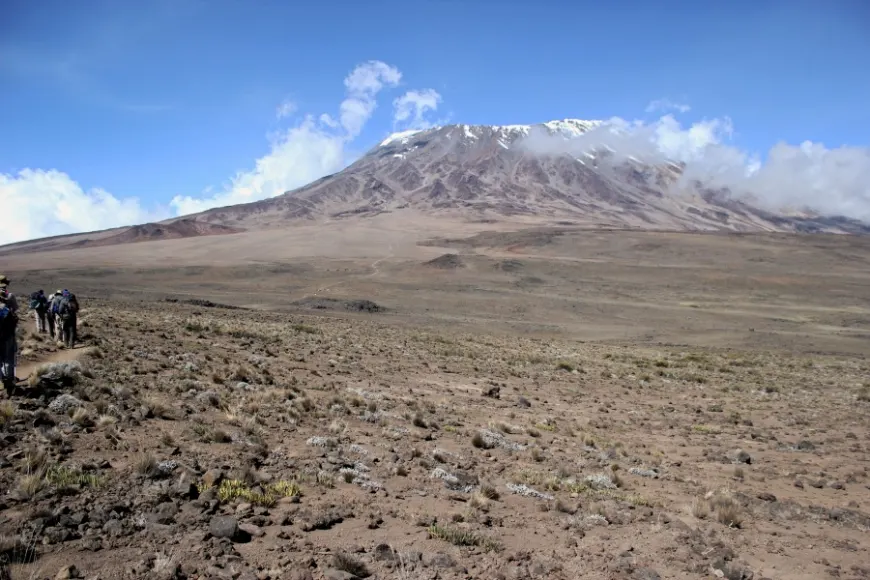
Lake Manyara National Park
Lake Manyara National park is generally visited as the first stop on a safari which takes in this park and Ngorongoro and Serengeti. You will certainly see the wildebeest, giraffes and baboons with high concentration than any other place in the world. as well as the famous tree-climbing lions.
This park is famous for bird watching as yellow-billed storks swoop and corkscrew on thermal winds rising up from the escarpment, and herons flap their wings against the sun-drenched sky. Even reluctant bird-watchers will find something to watch and marvel at within the national park.
The waterbirds which come to nest here (greater and lesser flamingos in particular) can usually be seen from the shore of the lake where you can walk on the shore and get closer for a great view.
Ngorongoro Conservation Area
There can be few people who have not heard, read or seen film or TV footage of this incredible 20-km-wide volcanic crater with its 600-metre walls packed with just about every species of wildlife to be found in East Africa.
The views from the crater rim are incredible, and though the wildlife might not look too impressive from up there, when you get to the bottom you will very quickly change your mind. It’s been compared to Noah’s Ark and the Garden of Eden and it does not come up to Noah’ Ark expectations these days, but you definitely see lions, elephants, rhinos, buffaloes and many of the plains herbivores such as wildebeest, Thomson’s gazelle, zebras and reedbuck, as well as thousands of flamingos wading in the shallows of Lake Magadi- the soda lake on the floor of the crater.
Located on the Kenyan border and 25km north of the infamous Oldoinyo Lengai Mountain, Lake Natron is an alkaline lake known for the huge flocks fo flamingo that gather here at the end of the rainy season. The surrounding area is remote, with desolate, beauty scenery, and offers a very rewarding, off-beaten track excursion. Its is also a good base for climbing Oldoinyo Lengai.
Lake Eyasi
Starkly beautiful Lake Eyasi lies at about 1km between the Eyasi escarpment in the north Kidero Mountains. It is a hot, dry area, around which live the Hadzabe (also known as Hadzapi or Tindiga) people, who are believed to have lived here for nearly 10,000 years and continue to follow hunting-and-gathering traditions. Their language is characterised by clicks and maybe distantly related to that of the San of Southern Africa, although is shows only a few connections to Sandal, other click language spoken in Tanzania. Also in the area the Iraqw (Mbulu) a people of Cushitic origin who arrived about 2000 years ago as well as Maasai and VariousBantu groups. The area is Tanzania’s main onion-growing centre, and there are impressive irrigation systems along Chemchem River near the camp site. The main village is Ghorofani, at the lake’s northeastern end.
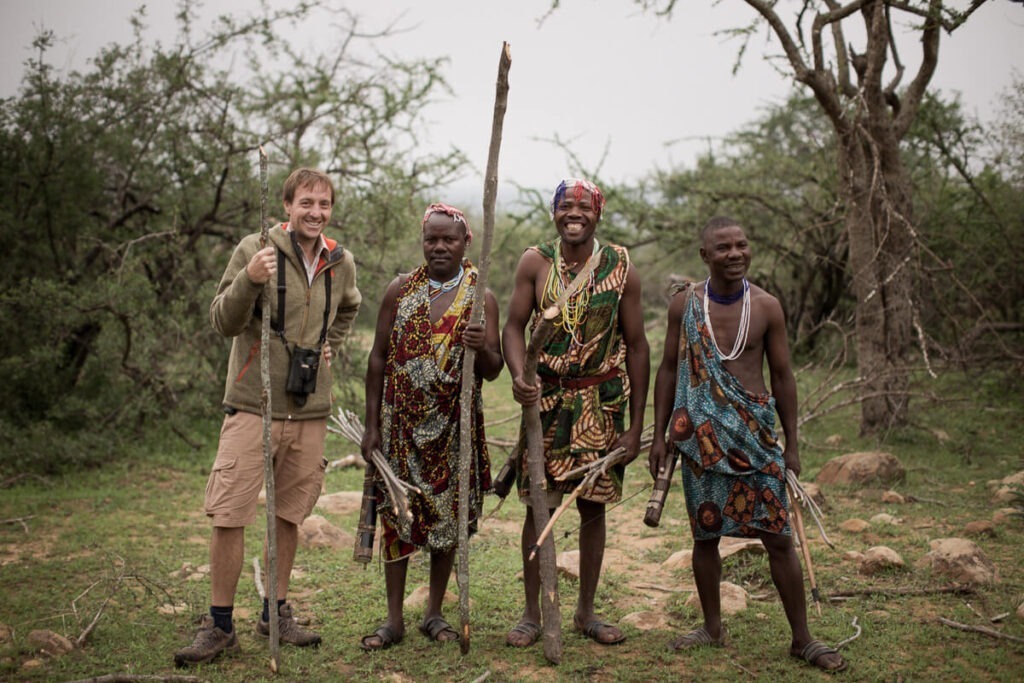
Mkomazi Game Resrve
This game reserve is located north and east of pare mountains and contiguous with Kenya’ Tsavo National Park. It is known for its black rhinos, introduced from South Africa for breeding. Other animals include elephants, giraffes, zebras and antelopes, although it takes luck and efforts to see these. There are walking safari as well in Mkomazi National park which can be arranged with armed ranger. 5km east if Same. The black rhino breeding area is off-limits to tourist.
Moshi, Kilimanjaro
Moshi, a bustling town at the foot of Mt. Kilimanjaro, is home of the Chagga people and centre of one Tanzania’s major coffee growing region. Most visitors use the town as a straightening point for climbing Mt. Kilimanjaro, although it is a pleasant place in its own right to relax for a couple of days. It is also tens to be less expensive than nearby Arusha.
Arusha
80km west of Moshi town, is one of Tanzania’s most developed and fastest-growing towns, Arusha which is also a gateway to Northern circuit National parks, Serengeti, Ngorongoro, Tarangire, Lake Manyara National park. As such , its the safari capital of Tanzania and is a major tourism centre.
The town sits in lush countryside near the foot of Mt Meru and enjoys a temperate climate throughout the year. Surrounding it are many coffee, where and maize estates tended by the Arusha and Meru people.Arusha is divided into two sections by the small Naura River Valley . To the east f the valley are most hotels, the post office and craft shops. To the west are the commercial and industrial areas, the market, some hotels and bus station..
Lake Chala
Situated in a spectacular location is an attractive place, with a splendid views. This deep and spooky crater Lake is about 40km from Moshi town. There are grand views from the crater rim, near Lake Chala view point, with the mysterious lake shimmering hundreds of metres below. You can walk around the lake rim or trek down to the shore. Where you will follow a path. This track will take you to the tree forest and down on the base where the Lake is. Expect this leg of the trek to take 2 to 3 hours. You can swim or do canoeing close by but be very careful also listen to your local guide. The roads to Chala turns off Taveta Himo road and One of the nice day trip from Moshi which is well gifted with nature and breathtaking views. Lake Chala which is a crater lake located between the border of Tanzania and Kenya contain all reason to be a perfect hideout for pictures and chilling spot. This must visit spot is the hidden gem that everyone should go either for a day trip or for camping overnight.
Amani Nature Rserve
Amani nature reserve, in the heart of the eastern Usambara Mountains, is peaceful, beautiful place with some good walks. Its well worth detour if you are ornithologically oriented. There is a good network of trails, several comfortable hotels and good local guides to take you around the forest. At Amani nature reserve you will be able to learn about the history of plants and animals and traditional uses of medical plants. You may also be able to witness endemic bird species which includes the long-billed tailorbird, the Usambara eagle owl , Uluguru violet-backed, Amani and banded green sunbirds and the green-headed oriole. Amani is 32km northwest of Muheza along a dirt road that is in fair condition except for the final seven kilometres which can be in bad shape during the rainy season.
Saadani National Park
Tiny Saadani is on the coast about 70km north of Bagamoyo. While you won’t see close to the numbers and variety of animals that you would in the national parks, it has the advantages of being directly on the Zanzibar. It is well worth a visit if you don’t have time to get to the larger parks, or if you want a few days sitting back and relaxing. To the south of the reserve is the Wami River, where you are likely to see hippos, crocodiles and many birds, including lesser flamingos (in the delta) fish eagles, hammerkops and king fisher. Girraffes are commonly seen , and with some efforts you may also see elephants, Lichtenstein’s hartebeest. The main activities are boat trips along the Wami River and wildlife drives and walks..
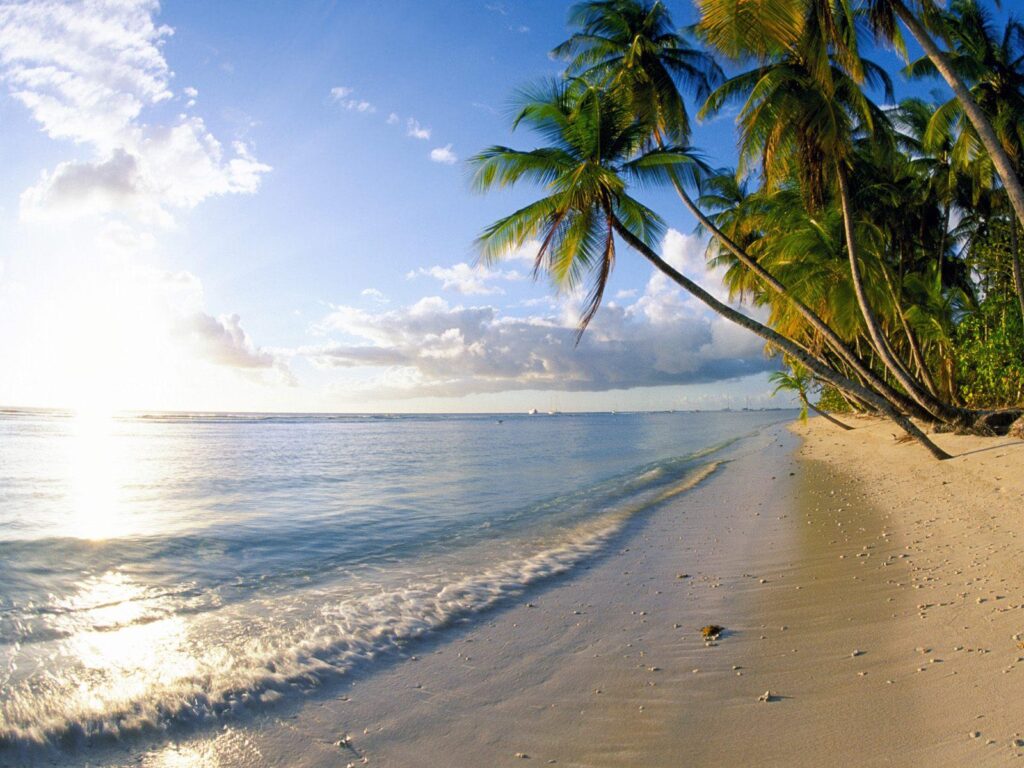
Rubondo Island
Rubondo Island National Park, in Lake Victoria’s southwestern corner, is known for its tranquil atmosphere and its rich and diverse bird life. Close to 400 species have been identified here including the fish eagle , heron, stork, ibis, kingfisher and cormorant. Rubondo is also one of the few places in tatunga, an ‘amphibious’ antelope that likes to hide among the marshes and reeds making the shoreline. There are also many types of butterflies , and small populations of chimpanzees, hippos, crocodiles, giraffes and even elephants.
Ruaha National Park
Ruaha National park was created in 1964 from half of the Rungwa Game Reserve. It covers 13000 sq km. Like the Selous, it is a best place with extraordinary wildlife view and off-the-beaten track safari experience. Elephants, hippos and crocodiles, and kudu, roan and sable antelope are particularly numerous. The Great Ruaha River which forms the eastern boundary of the park, has spectacular gorges, though a lot of averaging 1000 metres in height with occasional rocky outcrops. Visiting the park is only feasible in the dry season, from June to December and the grass can be long between Frebruary and April, restricting game viewing.

